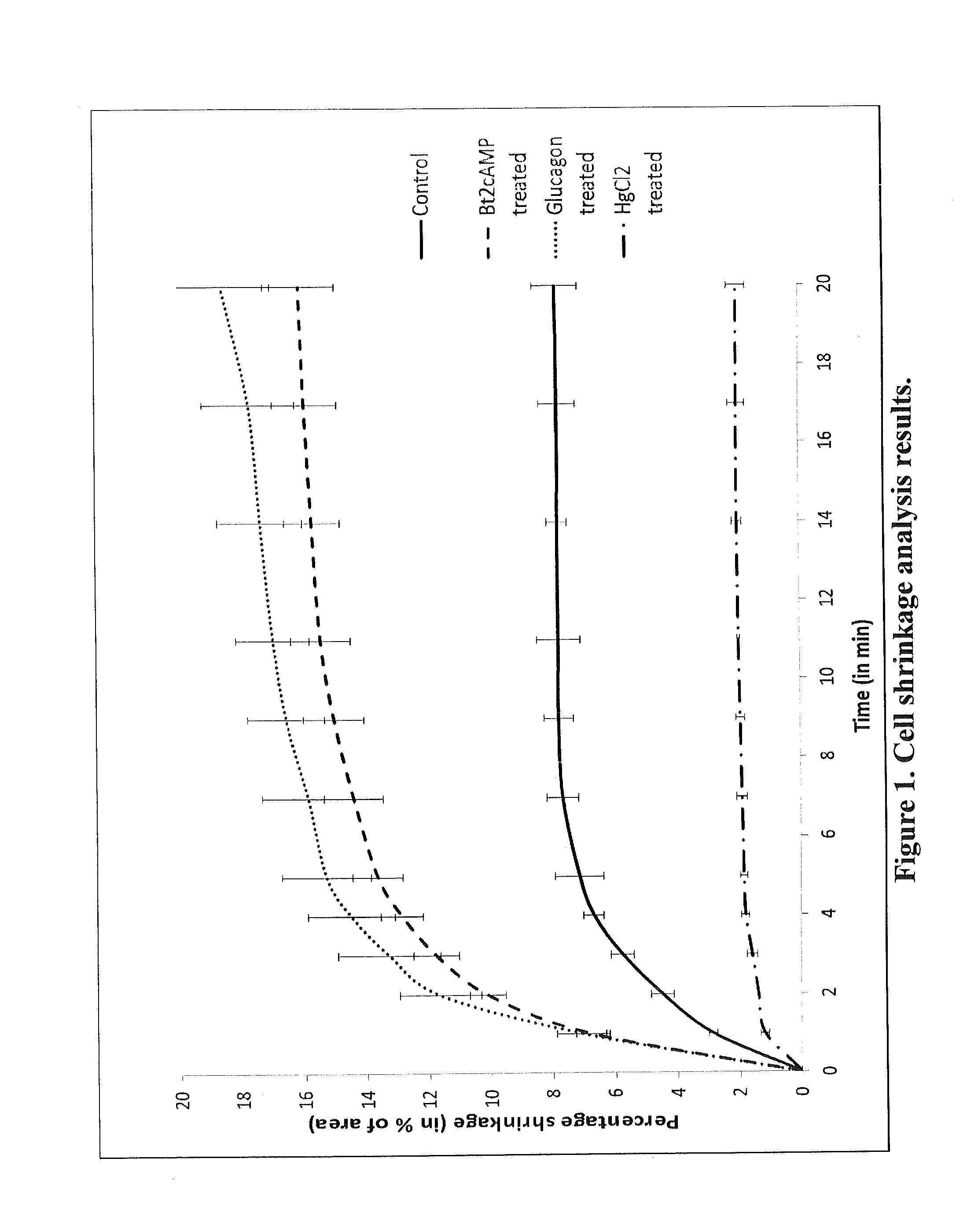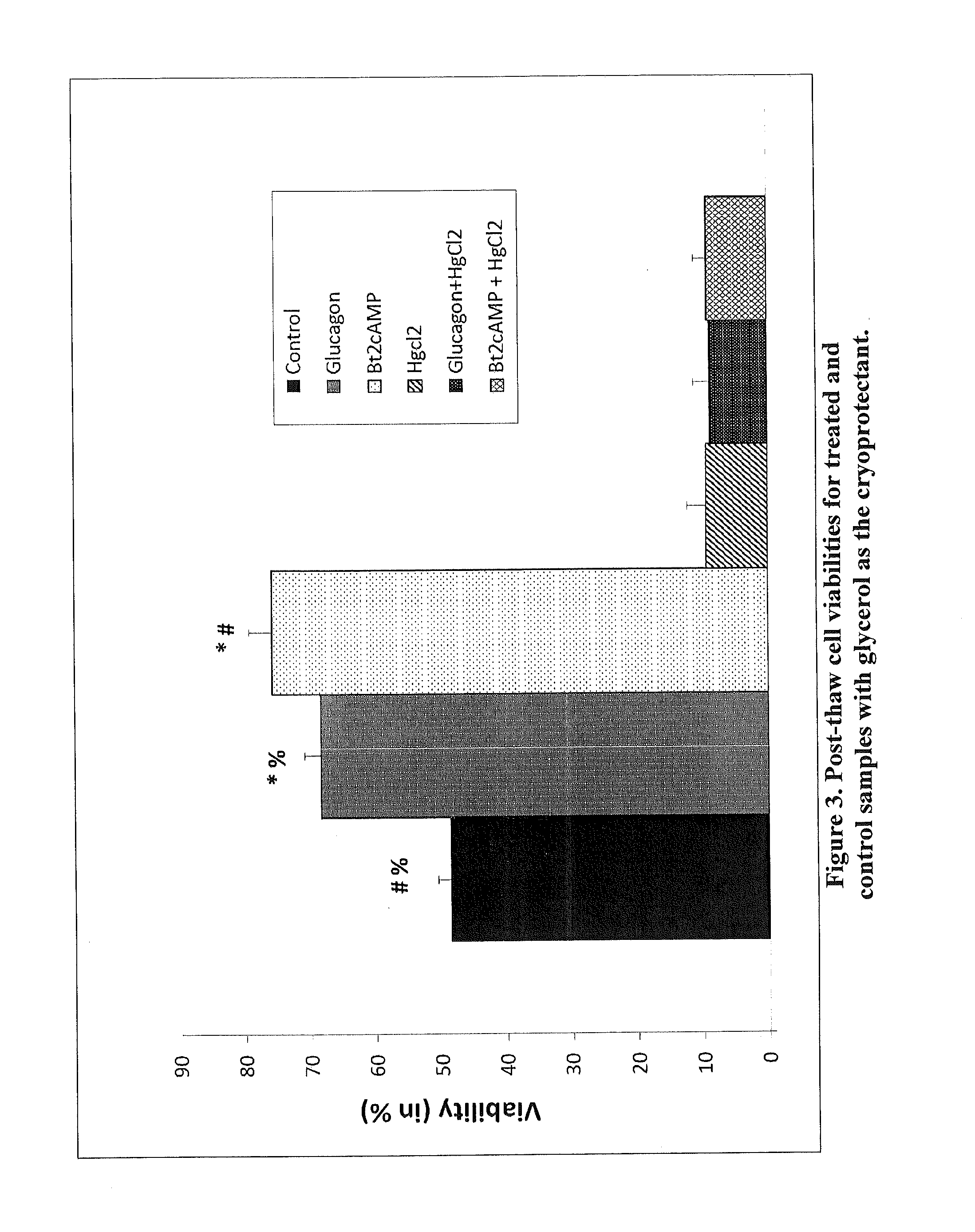Increased aquaporin expression on cellular membrane to improve cryopreservation efficiency
a cryopreservation efficiency and aquaporin technology, applied in cell culture active agents, artificial cell constructs, instruments, etc., can solve the problems of high cost, objectionable, and inability to detect toxicity in live animals
- Summary
- Abstract
- Description
- Claims
- Application Information
AI Technical Summary
Benefits of technology
Problems solved by technology
Method used
Image
Examples
Embodiment Construction
[0011]“Mammalian” as used herein may be any mammalian species, including, dog, cat, mouse, cow, horse, etc., as well as primate species, particularly human.
[0012]“Cells” as used herein may refer to cells separated from a tissue, or cells that reside in a tissue. In a particular embodiment the cells are liver cells, particularly hepatocytes.
[0013]“Tissue” as used herein refers to an organized assembly of different cells. For example, “liver tissue” may be comprised of hepatocytes, along with sinusoidal hepatic endothelial cells, Kupffer cells, hepatic stellate cells, etc., organized as found in vivo.
[0014]“Choleretic agent” or “choleretic stimuli” as used herein may be any compound which enhances bile secretion when administered to a mammalian subject. Numerous such compounds are known, including but not limited to those described in U.S. Pat. Nos. 3,065,134; 3,084,100; 3,309,271; 3,708,544; and 3,700,775, the disclosures of which are incorporated herein by reference. In some embodim...
PUM
 Login to View More
Login to View More Abstract
Description
Claims
Application Information
 Login to View More
Login to View More - R&D
- Intellectual Property
- Life Sciences
- Materials
- Tech Scout
- Unparalleled Data Quality
- Higher Quality Content
- 60% Fewer Hallucinations
Browse by: Latest US Patents, China's latest patents, Technical Efficacy Thesaurus, Application Domain, Technology Topic, Popular Technical Reports.
© 2025 PatSnap. All rights reserved.Legal|Privacy policy|Modern Slavery Act Transparency Statement|Sitemap|About US| Contact US: help@patsnap.com



